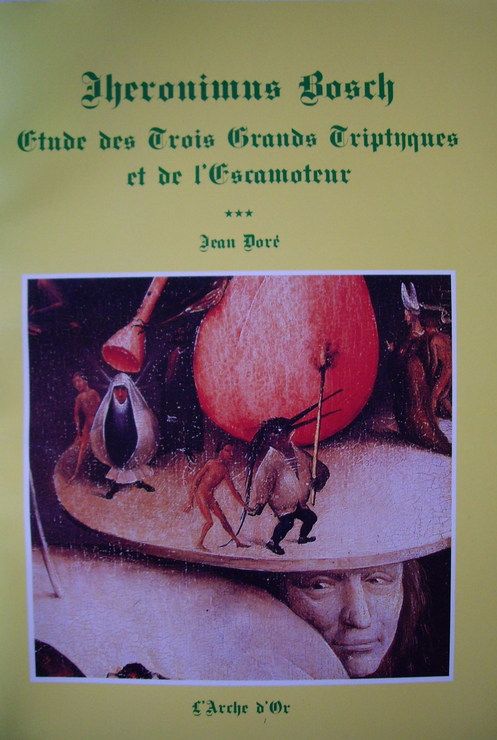
Doré 1991
Jheronimus Bosch – Étude des Trois Grands Triptyques et de l’Escamoteur (Jean Doré) 1991
[L’Arche d’Or, Talant, 1991, 24 pages + 10 ill.]
Doré believes that the man hanging from a giant key in the right interior panel of the Garden of Delights leads to a correct interpretation of the triptych. The detail reminds him of the insignia of the Order of the Golden Fleece, which is why he sees a number of allusions to the voyage of Jason and the Argonauts in the triptych. Because Frederick III (the German emperor behind the haywain) had died in 1494, and because Alexander VI (the pope behind the haywain) was not a pope yet in 1491, the Haywain triptych dates from 1492 or 1493. Two of the figures atop the haywain are Philip the Fair and his sister Margareth, who in 1493 was sent back to her father Maximilian by the French king (who no longer wanted to marry her). The haywain is in fact a triumphal chariot which commemorates this happy event. Doré even draws a litte map with the presumed route followed by the haywain (from St Quentin to Treves). The figure in the exterior panels is said to be king David with the outlooks of Charles the Bold.
The figure who is bending over in the The Conjuror panel is Jean Molinet, the Burgundian chronicler. As for the centre panel of the Lisbon St Anthony triptych: the harp-playing creature riding a ‘plucked peacock’ is Philip the Fair representing King David. The white lady and the man with the cup behind the table are Mary of Burgundy and Maximilian. The beggar with the severed foot is Frederick III, and the young woman next to Anthony is Margareth of Austria, Philip the Fair’s sister. Complete madness, this (fortunately very thin) booklet.
[explicit 24th June 2020]